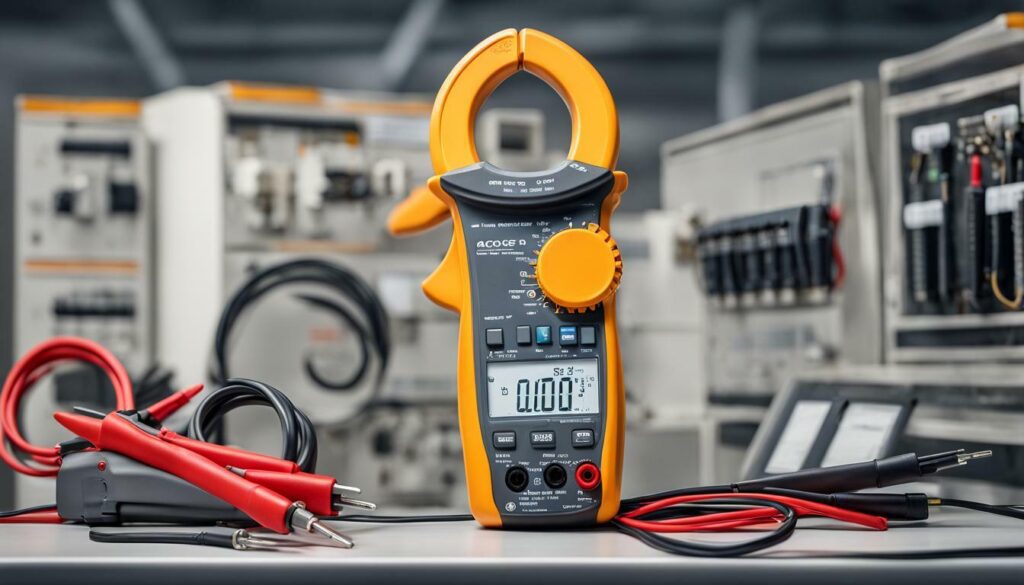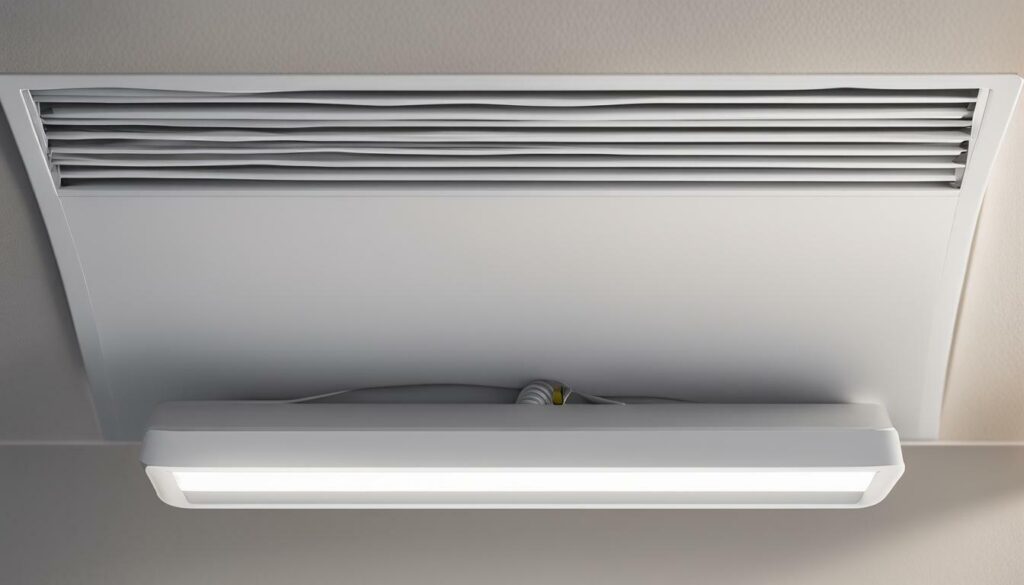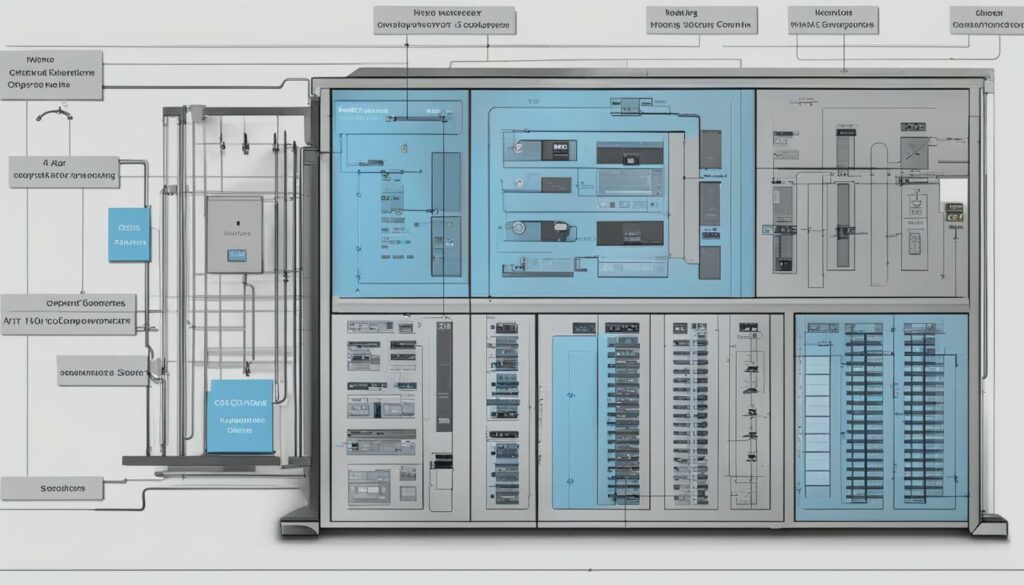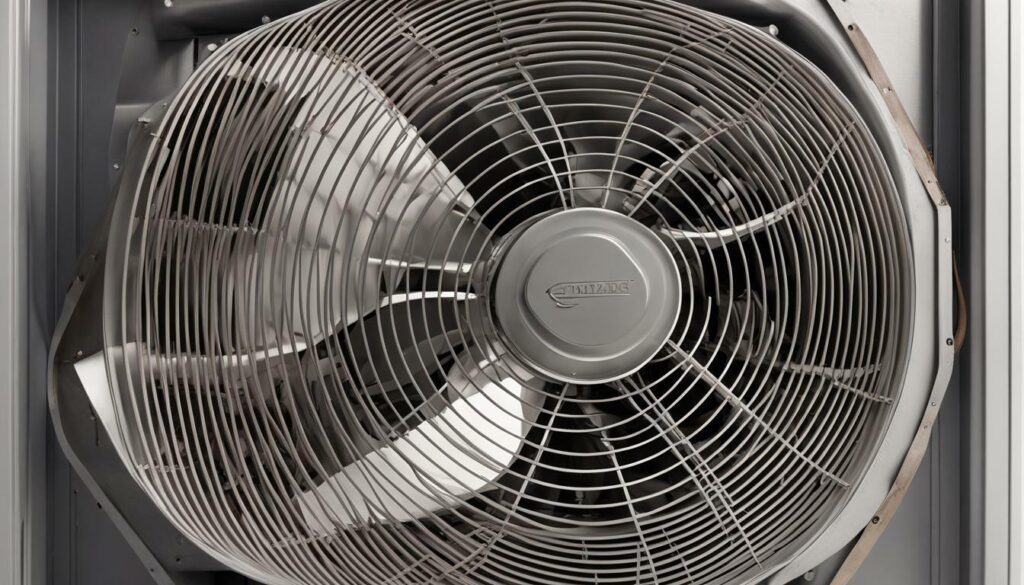As an HVAC professional, having a reliable clamp meter is essential for accurately measuring various HVAC parameters. With so many options available, it can be overwhelming to choose the best clamp meter for your needs.
That’s why we’ve put together this comprehensive guide to help you uncover the top-rated clamp meters specifically designed for HVAC applications. We’ll discuss their features, benefits, and customer reviews to help you make an informed decision.
Key Takeaways:
- Choosing a reliable clamp meter is crucial for accurate HVAC measurements.
- There are many clamp meters available specifically designed for HVAC applications.
- By selecting the right clamp meter, you’ll be able to streamline your diagnostic process and improve efficiency.
Why a Reliable Clamp Meter is Essential for HVAC Professionals
If you’re an HVAC professional, you understand the importance of accuracy and precision in your work. That’s why having an accurate clamp meter is essential to your job. You need a tool that can measure current and voltage with high accuracy to ensure accurate readings of heating and cooling systems.
Accuracy is particularly important when troubleshooting HVAC systems. You don’t want to waste time and effort trying to fix the wrong problem because of inaccurate readings. A reliable clamp meter can help you pinpoint issues quickly and efficiently.
In addition to accuracy, a professional-grade clamp meter can provide you with enhanced features that make your job easier. For instance, some models have advanced temperature measurement capabilities, which can be incredibly useful for diagnosing issues in HVAC systems that rely on temperature control. Furthermore, a professional-grade clamp meter can provide you with improved durability and ruggedness, ensuring it can withstand the rigors of daily use.
Overall, a reliable and accurate clamp meter is a must-have for any HVAC professional. Not only will it help you perform your job more efficiently, but it can also help you provide better service to your customers.


Top Rated HVAC Clamp Meters
When it comes to finding the right clamp meter for HVAC applications, there are several options to consider. To help you make an informed decision, we’ve compiled a list of the top-rated clamp meters on the market that are specifically designed for HVAC professionals. Here’s a closer look:
| Clamp Meter | Features | Customer Reviews |
|---|---|---|
| Fieldpiece SC260 Compact Clamp Meter | True RMS measurements, dual temperature readings, non-contact voltage detection | “Great unit, accurate and dependable.” “Perfect for HVAC work!” |
| Fluke 902 FC True-RMS HVAC Clamp Meter | Remote connectivity, temperature measurements, Min/Max/Avg readings | “Very easy to use with helpful features.” “Fluke never disappoints!” |
| Klein Tools CL800 Digital Clamp Meter | Auto-ranging, backlit display, thermocouple input | “Really impressed with the accuracy and ease of use.” “Great value for a professional-grade meter.” |
| UEi Test Instruments DL429B Digital Clamp Meter | Auto power off, NCV mode, capacitance measurements | “Excellent all-around meter for HVAC work.” “Highly recommend for anyone in the field.” |
As you can see, there are several reliable options to choose from when it comes to HVAC clamp meters. However, keep in mind that the best clamp meter for you may depend on your specific needs and preferences. Be sure to read HVAC clamp meter reviews and compare features before making a purchase.
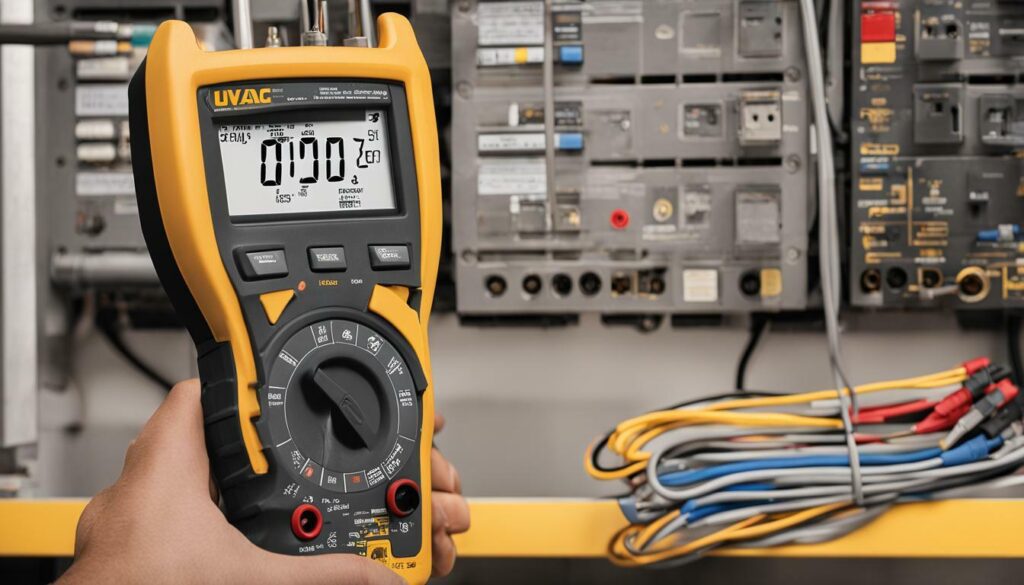

Key Features to Look for in an HVAC Clamp Meter
If you’re a heating, ventilation, and air conditioning (HVAC) professional, having the right tools at your disposal can make all the difference in ensuring accuracy and efficiency. One such tool is an HVAC clamp meter, which can measure electrical current, voltage, and resistance in HVAC systems. When looking for the best clamp meter for heating and cooling systems, here are some key features to consider:
Accuracy: Look for a clamp meter that offers high accuracy in measuring electrical parameters. This will help you make precise measurements and troubleshoot HVAC systems more effectively.
Range: Make sure the clamp meter has a range that is suitable for the HVAC systems you work with. A wider range will allow you to measure a variety of parameters and ensure compatibility with different systems.
Professional Grade: Choose a clamp meter that is specifically designed for HVAC professionals. Professional grade HVAC clamp meters offer advanced features and durability that can withstand the rigorous demands of the job.
Ease of Use: Look for a clamp meter that is easy to use and navigate. Features like a backlit display, auto-ranging, and hold function can make your work easier and more efficient.
Safety Features: A reliable HVAC clamp meter should have safety features like overload protection, non-contact voltage detection, and audible warnings. These features can help you work safely and prevent accidents.
When selecting the best clamp meter for HVAC, consider these features to ensure you choose a device that will meet your needs and provide reliable performance.
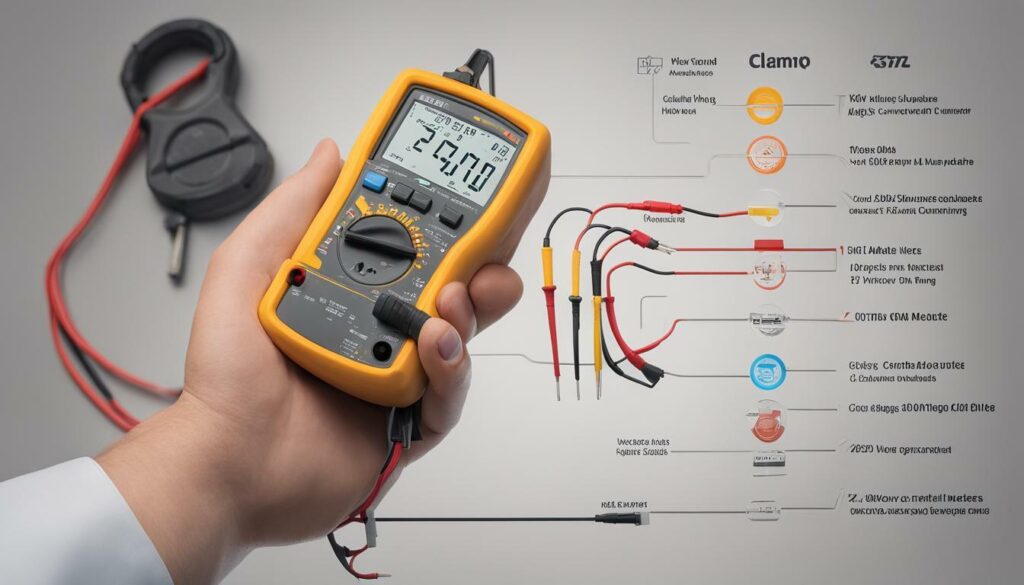

Advantages of Using a Clamp Meter in HVAC Troubleshooting
If you’re an HVAC professional, you know that accurate measurements are crucial in troubleshooting heating and cooling systems. A reliable HVAC clamp meter can be an invaluable tool in this process. Not only does it offer accurate readings, but it also saves time and effort by eliminating the need for multiple measurement tools.
With a reliable HVAC clamp meter, you can quickly and easily measure electrical current, voltage, and other key parameters. This can help you identify potential issues with the system and pinpoint the source of the problem. By detecting and resolving issues in a timely manner, you can prevent costly breakdowns and ensure that the system is operating efficiently.
Additionally, a professional-grade HVAC clamp meter can offer advanced features, such as temperature measurement and data logging, that can further enhance troubleshooting capabilities. With these features, you can better understand the behavior of the HVAC system and make informed decisions on repairs and maintenance.
Overall, a reliable and accurate HVAC clamp meter is an essential tool for any HVAC professional looking to provide excellent service and ensure the longevity of heating and cooling systems.


Best Practices for Using a Clamp Meter in HVAC
As an HVAC professional, you know how crucial it is to have accurate and reliable tools in your arsenal. A clamp meter is no exception. With its ability to measure electrical current without interrupting the circuit, it can be a valuable asset in HVAC troubleshooting. To ensure you’re getting the most out of your clamp meter, here are some best practices to keep in mind:
- Choose a professional-grade clamp meter: While cost may be a factor, investing in a high-quality clamp meter will pay off in the long run with its durability and accuracy.
- Read the manual: Before using your clamp meter, take the time to read the manual thoroughly. Familiarize yourself with its features and functions to ensure accurate and safe operation.
- Ensure proper contact: When clamping the meter around a wire or conductor, make sure the clamp is fully closed and seated properly. This will ensure reliable and accurate measurements.
- Use the appropriate range: To ensure the most accurate readings, use the appropriate range setting on your clamp meter. Avoid using the auto-range feature, as it can lead to inaccurate readings.
- Take multiple readings: To ensure accuracy, take multiple readings of the same circuit or component. This will help identify any inconsistencies or variations in the readings.
- Practice safety precautions: Always follow proper safety precautions when working with electrical circuits. Wear appropriate personal protective equipment (PPE) and avoid touching live wires or components.
By following these best practices, you can ensure accurate and safe usage of your clamp meter in HVAC applications.
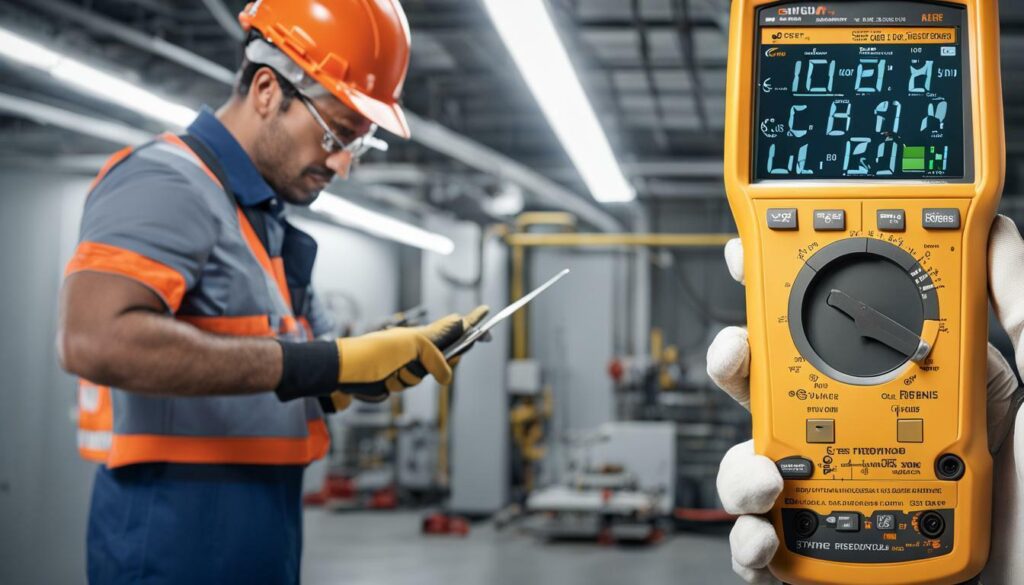

Common Mistakes to Avoid When Using a Clamp Meter in HVAC
When using a clamp meter for HVAC applications, accuracy and reliability are crucial. However, even the best clamp meter can be rendered ineffective if not used correctly. Here are some common mistakes you should avoid:
- Not zeroing the meter: It is essential to zero the meter before taking a reading. Failure to do so can lead to inaccurate measurements. To zero the meter, simply press the zero button or rotate the dial to the zero position.
- Using the wrong range: Selecting the wrong range can also result in inaccurate readings. Always ensure that the selected range is appropriate for the parameter being measured.
- Not clamping the wire properly: A proper clamp connection is critical for accurate readings. Ensure that the wire being measured is fully inserted into the clamp and that the clamp is securely fastened around the wire.
- Not holding the meter steady: Movement during a reading can significantly impact accuracy. Be sure to hold the meter steady and keep it away from any electrical noise sources.
- Using a damaged meter: A damaged meter can be a hazard and can produce inaccurate readings. Always check the meter for damage before use and replace it if necessary.
By avoiding these common mistakes, you can ensure that your clamp meter delivers accurate and reliable results every time.


Maintenance and Calibration of HVAC Clamp Meters
To ensure that your professional grade HVAC clamp meter remains reliable and accurate over time, regular maintenance and calibration are necessary. By following some simple tips, you can keep your HVAC clamp meter in top working condition.
First, it’s crucial to regularly clean your clamp meter to prevent damage from dirt and debris. Use a soft, dry cloth to wipe down the exterior of the meter and clean the jaws using a specialized cleaning tool or a soft brush. Avoid using water or cleaning solutions that could damage the meter’s inner components.
In addition to cleaning, calibration is necessary to ensure that your clamp meter is measuring accurately. Calibration is the process of adjusting the meter’s internal settings to match a known standard. It’s recommended that you calibrate your HVAC clamp meter at least once a year, or more frequently if you’re using it frequently or if you suspect it’s not measuring correctly.
Calibration can be done either by sending your meter to a specialized calibration lab or by using a calibration tool at home or in the field. If you choose to calibrate your meter yourself, make sure you’re using a reliable and accurate calibration tool that’s appropriate for your meter’s specifications.
It’s also important to store your HVAC clamp meter in a dry, cool place to prevent damage from moisture or extreme temperatures. Avoid exposing your meter to direct sunlight or other sources of heat.
By following these maintenance and calibration tips, you can ensure that your reliable HVAC clamp meter continues to provide accurate readings and help you efficiently troubleshoot HVAC systems.


Cost-Effective HVAC Clamp Meters for Budget-Conscious Professionals
If you’re an HVAC professional on a budget, you don’t have to compromise on quality when it comes to choosing a reliable clamp meter. There are many options available that offer accurate and consistent performance without breaking the bank.
One such option is the Fieldpiece SC260, which is designed specifically for HVAC applications and is known for its durability and accuracy. It features a non-contact voltage indicator and measures AC/DC voltage, AC amps, resistance, continuity, and capacitance. The large backlit display makes it easy to read in any lighting conditions.
The UEi Test Instruments DL369 is another affordable option that doesn’t skimp on features. It’s a professional-grade clamp meter that offers true RMS measurement and can measure AC/DC voltage, AC amps, frequency, resistance, continuity, and diode testing. Its compact size and ergonomic design make it easy to use in tight spaces.
Finally, the Amprobe AMP-210 is a reliable and affordable choice for HVAC professionals. It’s a true RMS clamp meter that can measure AC/DC voltage, AC amps, resistance, continuity, and capacitance. It also features a built-in flashlight and tough rubberized housing for durability.
Overall, these cost-effective clamp meters offer reliable performance for HVAC professionals on a budget. By choosing one of these options, you can ensure accurate measurements without overspending.
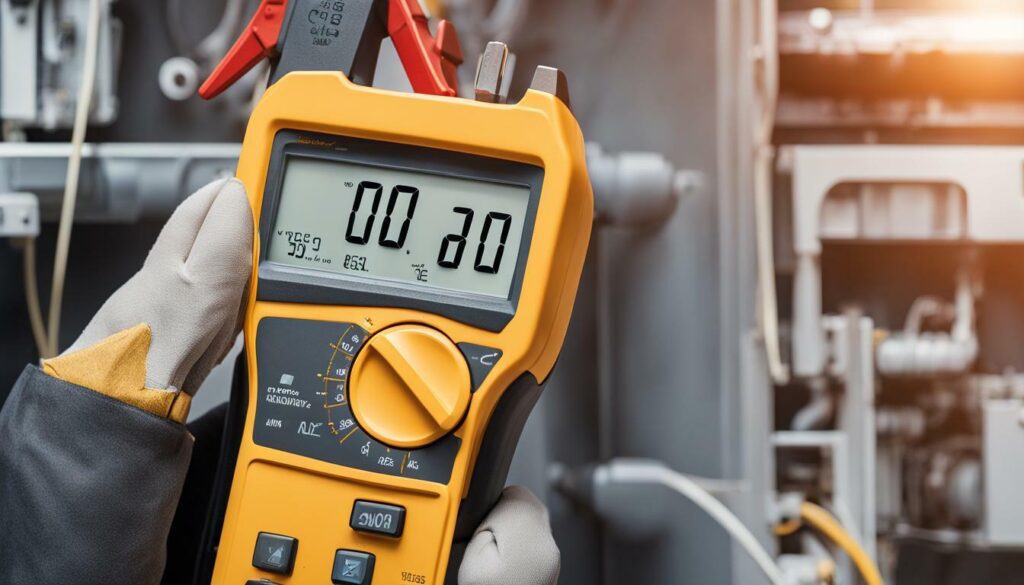

Conclusion
Choosing the best clamp meter for HVAC is crucial to ensuring accurate and reliable measurements, and ultimately, efficient troubleshooting. Throughout this article, we’ve highlighted some of the top-rated HVAC clamp meters available on the market and discussed key features to consider when purchasing one.
Top Rated HVAC Clamp Meters
If you’re looking for a reliable and accurate HVAC clamp meter, the top-rated options include the Fluke 902 FC, Klein Tools CL800, and Fieldpiece SC660. These meters offer a range of features, including true RMS measurement, temperature measurement, and wireless connectivity, making them ideal for HVAC professionals.
Best Clamp Meter for HVAC
Ultimately, the best clamp meter for HVAC will depend on your specific needs and budget. However, by considering features such as accuracy, reliability, and professional-grade capabilities, you can ensure that you are investing in a high-quality tool that will enhance your HVAC troubleshooting processes.
Remember to also follow best practices for using and maintaining your clamp meter to optimize its performance. By taking care of your tool and using it correctly, you can improve accuracy and efficiency in your work.
So, whether you’re a seasoned HVAC professional or just starting out in the field, investing in a top-rated and reliable clamp meter is sure to make a difference in your work. With so many options available, take the time to research and choose the best clamp meter for your needs.
FAQ
Q: What is a clamp meter?
A: A clamp meter, also known as a clamp-on meter, is a versatile electrical testing device that combines a digital multimeter with a current sensor. It allows you to measure electrical current without needing to disconnect or break the circuit.
Q: How does a clamp meter work?
A: A clamp meter works by using a magnetic clamp to measure the magnetic field generated by an electrical current. It clamps around a wire or conductor and detects the magnetic field, which is then converted into a current reading.
Q: What can I use a clamp meter for in HVAC applications?
A: In HVAC applications, a clamp meter can be used to measure electrical current, voltage, resistance, capacitance, temperature, and frequency. It is an essential tool for troubleshooting electrical systems, checking the performance of motors, and verifying the functionality of HVAC components.
Q: Do I need a special clamp meter for HVAC?
A: While a general-purpose clamp meter can be used in HVAC applications, it is recommended to use a clamp meter specifically designed for HVAC. These models often have additional features, such as temperature measurement, and are calibrated for HVAC parameters.
Q: Can I use a clamp meter on live circuits?
A: Yes, a clamp meter is designed to measure current on live circuits. However, it is important to follow proper safety procedures and ensure that the clamp meter is rated for the voltage and current levels you are working with.
Q: How often should I calibrate my clamp meter?
A: It is recommended to calibrate your clamp meter at least once a year or as specified by the manufacturer. Regular calibration ensures that the measurements remain accurate and reliable.
Q: Can I use a clamp meter for DC current measurements?
A: Yes, many clamp meters can measure both AC and DC current. However, it is important to check the specifications of the specific clamp meter model to ensure it is capable of measuring DC current.

